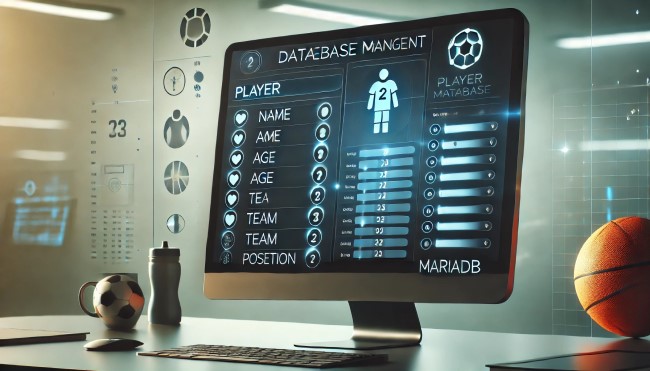How to Create a Player Database in MariaDB: A Comprehensive Guide

Creating a player database in MariaDB can be a powerful way to manage player data effectively, ensuring easy access, sorting, and analysis for sports-related operations. This guide will walk you through the steps to design and set up a player database, with structured headings and an engaging approach.
Introduction to Player Database Creation
Managing player data involves more than just recording names and ages; it often requires robust organization and querying capabilities. This is where a relational database management system like MariaDB can offer a reliable solution. Here, we’ll dive into how to set up and manage a player database, from installing MariaDB to writing SQL commands for optimal data handling.
Why Choose MariaDB for a Player Database?
MariaDB is a popular choice for database management due to its performance, ease of use, and compatibility with MySQL. Its versatility allows for storing large amounts of data, and its SQL capabilities make it ideal for managing complex datasets such as player statistics, teams, and performance metrics. By choosing MariaDB, you leverage open-source technology, ensuring cost-effectiveness and scalability as your data grows.
Step 1: Installing MariaDB
Before you can create a player database, you must have MariaDB installed. Here’s a quick installation process:
- For Linux: Use the command
sudo apt update && sudo apt install mariadb-serverin the terminal. - For Windows: Download the installer from the MariaDB official website and follow the setup wizard.
- Start the Service: After installation, start MariaDB with the command
sudo service mariadb start(Linux).
Once installed, you’re ready to begin creating your player database.
Step 2: Accessing MariaDB
Open the MariaDB command-line client by entering the following command:
Enter the root password, and you’ll access the MariaDB prompt. From here, you can manage databases, create tables, and execute SQL queries.
Step 3: Creating a Database for Players
Creating a database in MariaDB is straightforward. Here’s the command to create a new database named player_db:
Switch to the new database:
This step ensures that any commands executed will apply to the player_db database.
Step 4: Designing the Player Table Structure
A well-structured database table is essential for efficient data management. Consider what data fields are important. Typically, a player database might include:
- Player ID: Unique identifier (usually auto-incremented).
- Name: Full name of the player.
- Age: Player’s age.
- Team: The team the player belongs to.
- Position: Position of the player in the game (e.g., forward, midfielder).
Here’s the SQL command to create a players table with these columns:
Step 5: Inserting Data into the Player Database
With the players table created, it’s time to add player data. For example:
This command inserts two player records into the database. You can repeat similar commands to build a comprehensive player dataset.
Step 6: Querying the Player Database
Once you have data in your database, you can run queries to retrieve information. Some common queries include:
- Retrieve All Players:
- Filter by Team:
- Sort by Age:
These commands allow you to access specific data sets and gain insights into player information efficiently.
Step 7: Updating Player Records
Updating player information is simple. Suppose a player’s team changes; you can update their record as follows:
This command updates Jane Smith’s team in the database.
Step 8: Deleting Player Records
To remove a player’s record from the database, use the DELETE command. For example:
Be cautious when using DELETE, as this action is irreversible without backups.
Step 9: Advanced Player Database Management
Beyond simple data storage, MariaDB allows for more advanced data management, such as indexing and table optimization.
- Indexing: Speed up data retrieval by indexing key columns like
nameandteam. - Foreign Keys: If managing multiple related tables (e.g., teams and players), use foreign keys to maintain relationships between tables.
- Backups: Regularly back up your database to prevent data loss. You can do so with the command:
Conclusion
By following these steps, you can create and manage a player database in MariaDB efficiently. From installing MariaDB to executing advanced queries, this guide provides a complete approach to building a database that’s powerful, scalable, and user-friendly. With MariaDB’s flexibility, managing player data becomes straightforward, allowing you to focus on leveraging data insights for better performance and decision-making.

